-
Places to go
-
Things to do
-
Adventure
Nature
Culture
Wellness
Others
-
-
Festivals & Events
-
Festivals
Event Calendar
-
-
Plan Your Trip
-
Trip Ideas
Travel Details
Book Your Trip
-
- Travel Updates
Faith and Tradition: Shakti Peeths and Shakti Shrines of Nepal
Nepal, revered as a land of spirituality, is home to some of the most important shrines of Shakti worship. According to Hindu tradition, the Shakti Peeths are sacred sites that emerged when parts of Goddess Sati’s body fell upon the earth as Lord Shiva wandered in grief carrying her corpse.
Ancient texts like the Devi Bhagavata Purana and Kalika Purana describe 51 (sometimes 108) such holy sites spread across the Indian subcontinent. Nepal hosts a few of these, alongside many temples that local traditions regard as powerful centers of the Divine Mother.
Guhyeshwari Temple, Kathmandu
The Guhyeshwari Temple, located on the banks of the Bagmati River near the renowned Pashupatinath Temple, is the most important Shakti Peeth in Nepal. It is believed to mark the spot where the hips or yoni of Goddess Sati fell, making it a site of profound Tantric significance.
The temple is not only a place of worship for the goddess but also deeply connected to Shaivism, since it lies within the sacred Pashupatinath complex. Pilgrims visit Guhyeshwari to seek blessings of fertility, spiritual power, and protection, and it becomes especially vibrant during festivals such as Maha Shivaratri and Dashain. Because of its scriptural recognition, Guhyeshwari is often regarded as the spiritual heart of Shakta devotion in Nepal.
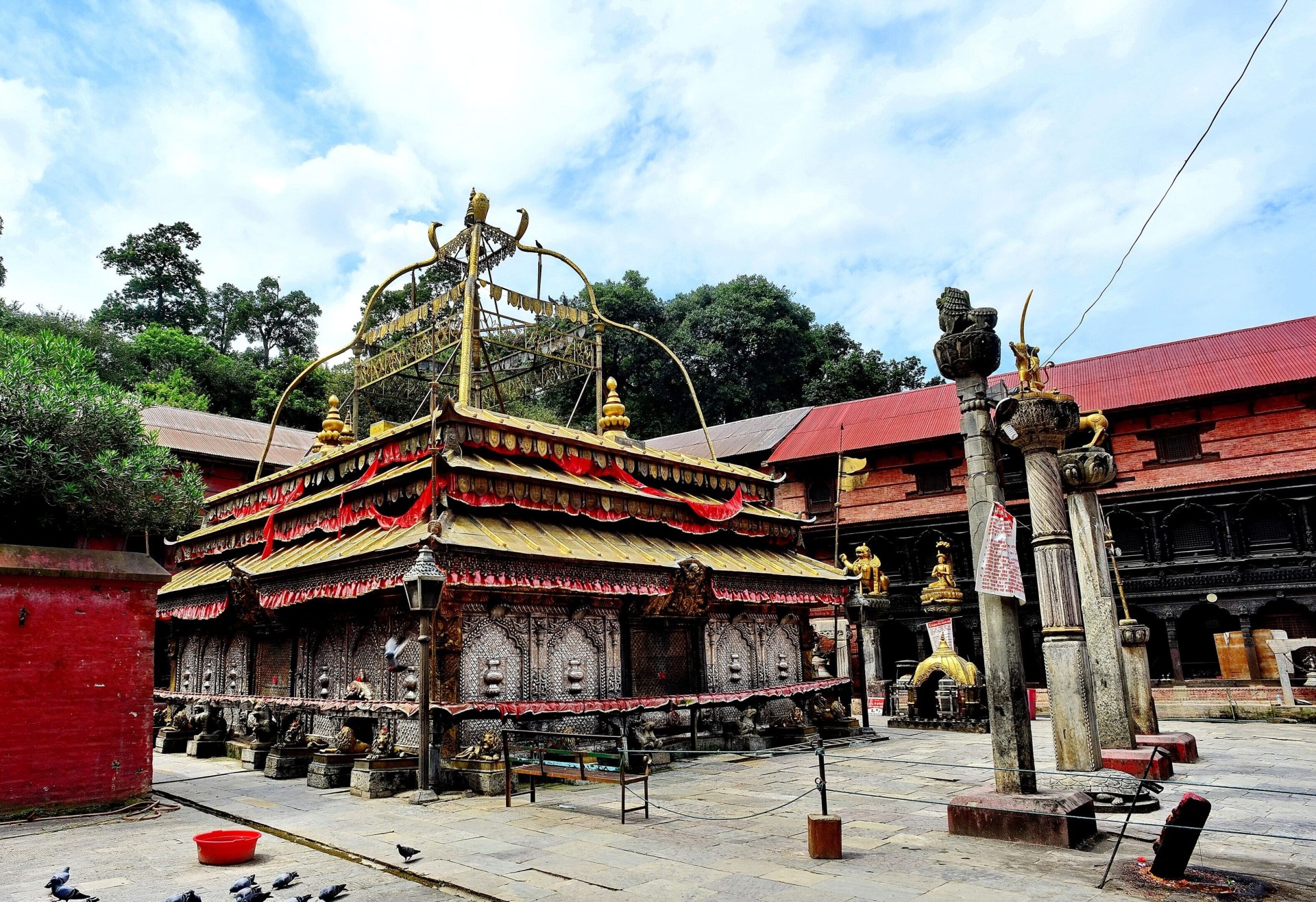
Dantakali Temple (Dharan, Sunsari District)
Situated on a hill in Bijayapur, Dharan, the Dantakali Temple is one of the most revered shrines in eastern Nepal. Its name, Dantakali, meaning “Tooth Kali,” comes from the belief that Sati’s teeth fell at this spot. This association gives the temple a unique place in Nepal’s Shakti tradition, even though it is not part of the canonical lists of 51 Shakti Peeths.
The temple draws large numbers of devotees during Dashain, when thousands of pilgrims climb the stone steps to offer prayers and sacrifices. For the people of Dharan and surrounding regions, Dantakali is not just a sacred temple but also a cultural landmark symbolizing the enduring strength of the goddess.
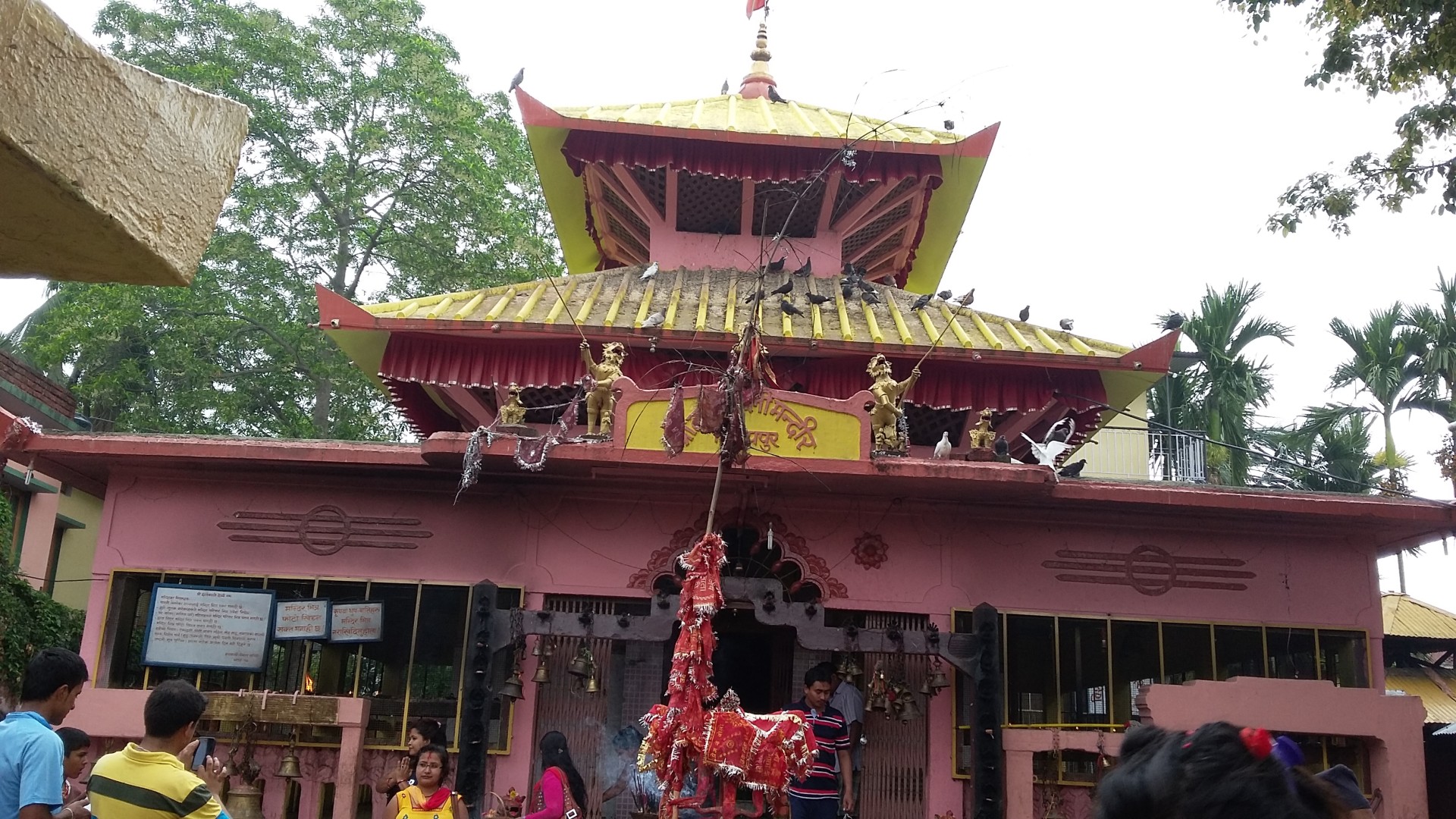
Kankalini Temple (Bhardaha, Saptari District)
The Kankalini Temple in Bhardaha, Saptari District, is one of the most prominent Shakti shrines of the eastern Terai. Dedicated to Goddess Durga, worshipped here as Kankalini Mai, the temple is considered a powerful seat of divine energy.
Local traditions associate it with the legend of Sati, though specific canonical connections are not clearly documented. The temple becomes a major pilgrimage site during Dashain, when thousands of devotees gather to worship the goddess, often through offerings and animal sacrifices.
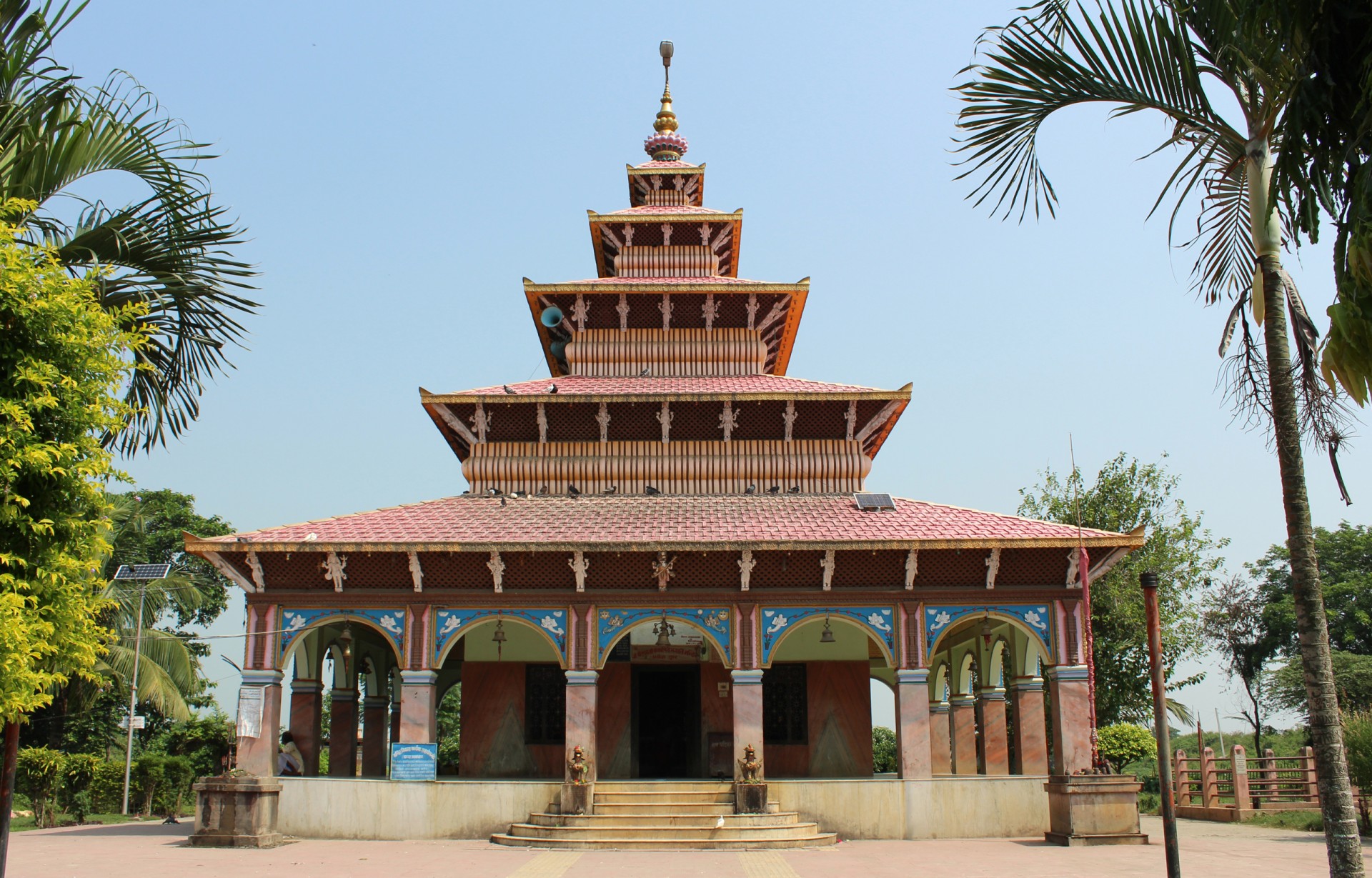
Pathibhara Devi Temple (Taplejung District)
High in the eastern Himalayas, at an altitude of about 3,794 meters, stands the Pathibhara Devi Temple, one of Nepal’s most revered pilgrimage sites. Although not listed in the classical Shakti Peeths, Pathibhara is regarded as a Shakti Sthal — a powerful seat of the goddess.
Devotees believe that prayers made here are fulfilled, particularly requests for fertility, prosperity, and protection. Pilgrimage to Pathibhara requires a strenuous trek, symbolizing both devotion and determination, and the temple draws visitors from Nepal, India, and Bhutan. Its breathtaking mountain setting adds to its spiritual aura, making it not just a shrine but also a site of natural wonder.
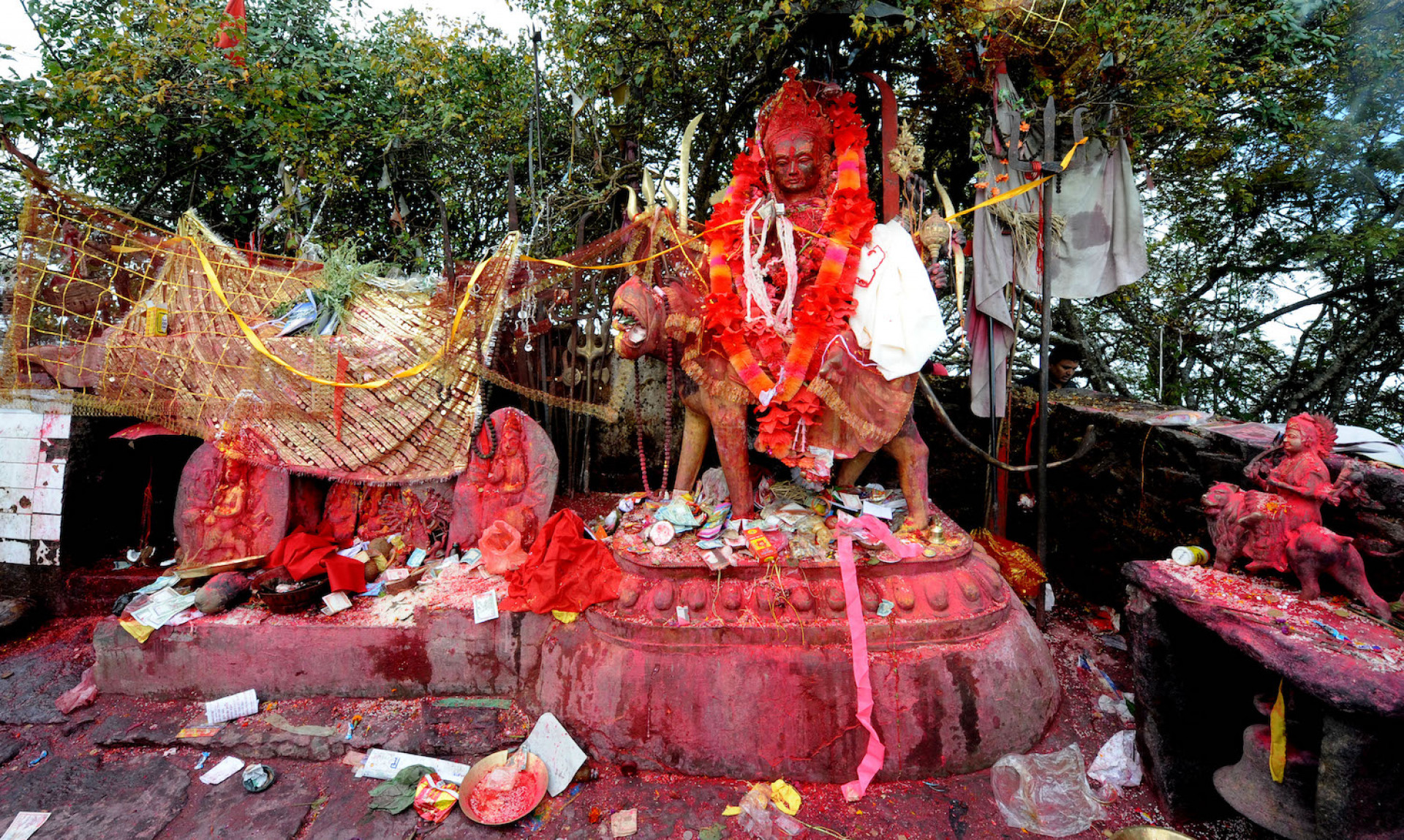
Dakshinkali Temple (Pharping, South of Kathmandu)
The Dakshinkali Temple lies about 22 kilometers south of Kathmandu, in Pharping, and is dedicated to the fierce goddess Kali. While not a canonical Shakti Peeth, it holds immense importance in Nepalese Shakta practice.
The temple is famous for animal sacrifices, which are performed especially on Tuesdays, Saturdays, and during the Dashain festival. Surrounded by forested hills, Dakshinkali has long been a center of tantric worship and remains a powerful place for devotees who seek courage, protection, and the blessings of Mother Kali.
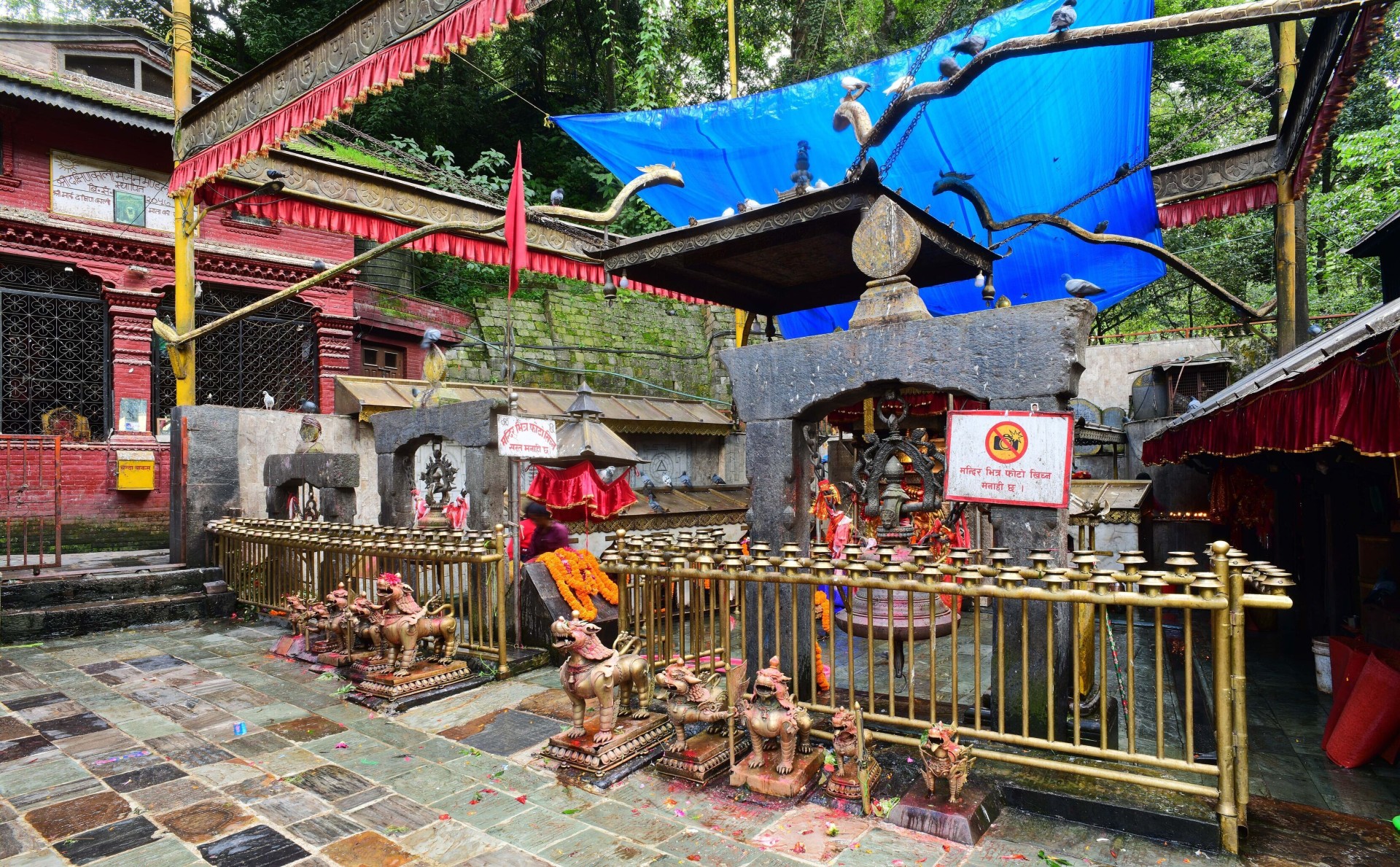
Baglung Kalika Temple (Baglung District)
In western Nepal, the Baglung Kalika Temple is one of the most significant centers of goddess worship. Dedicated to Kali, the temple is believed to safeguard devotees from misfortune and grant spiritual strength.
Local tradition sometimes associates the shrine with the Sati legend, though it is not recognized as one of the classical Shakti Peeths. The temple is especially crowded during Chaite Dashain and other festivals, when devotees from across western Nepal gather to offer prayers. As both a religious and cultural landmark, Baglung Kalika reflects the enduring devotion to Shakti that thrives in the western hills of Nepal.
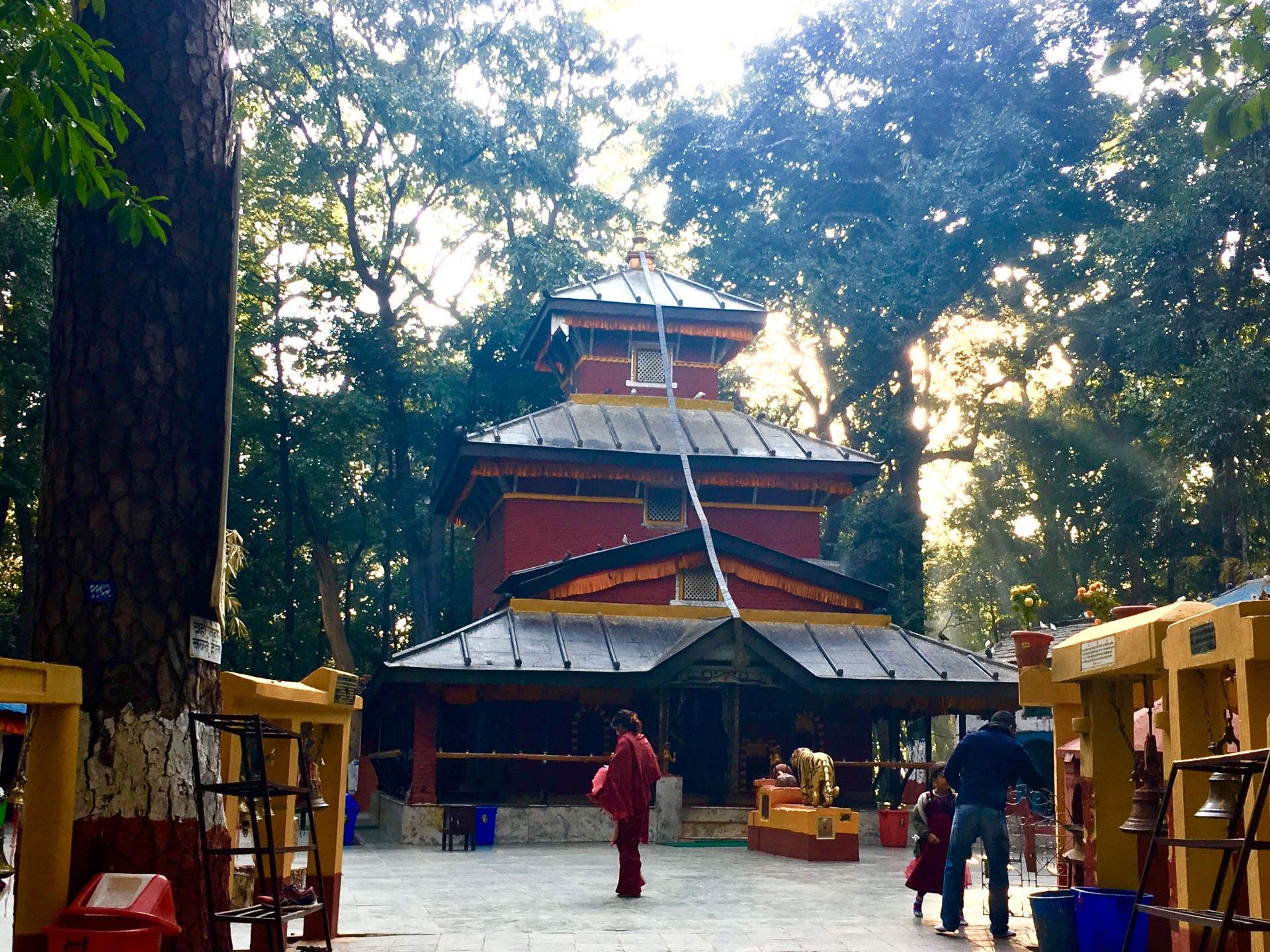
Cultural and Spiritual Significance
The Shakti temples of Nepal reflect a unique blend of scriptural tradition and local devotion. Guhyeshwari stands out as Nepal’s definitive Shakti Peeth recognized in Puranic texts, while temples like Dantakali, Kankalini, and Pathibhara hold immense importance in local belief. Collectively, they embody Nepal’s deep reverence for the Divine Feminine, where Shakti is worshipped as protector, nurturer, and destroyer of evil.
During Dashain, Nepal’s largest festival, these temples become focal points of devotion, with rituals, offerings, and gatherings that bring together people from across the country.
The Shakti Peeths and Shakti Sthals of Nepal illustrate the country’s profound spiritual heritage. From the Tantric sanctity of Guhyeshwari to the hilltop devotion at Dantakali and Pathibhara, each shrine reflects the enduring power of the goddess in Nepali culture. For pilgrims and seekers, these sacred spaces are not just temples but living embodiments of the cosmic feminine energy that sustains and transforms the universe.
Nepal Tourism Board is a national tourism organization of Nepal established in 1998 by an Act of Parliament in the form of partnership between the Government of Nepal and private sector tourism industry to develop and market Nepal as an attractive tourist destination. The Board provides platform for vision-drawn leadership for Nepal’s tourism sector by integrating Government commitment with the dynamism of private sector.



